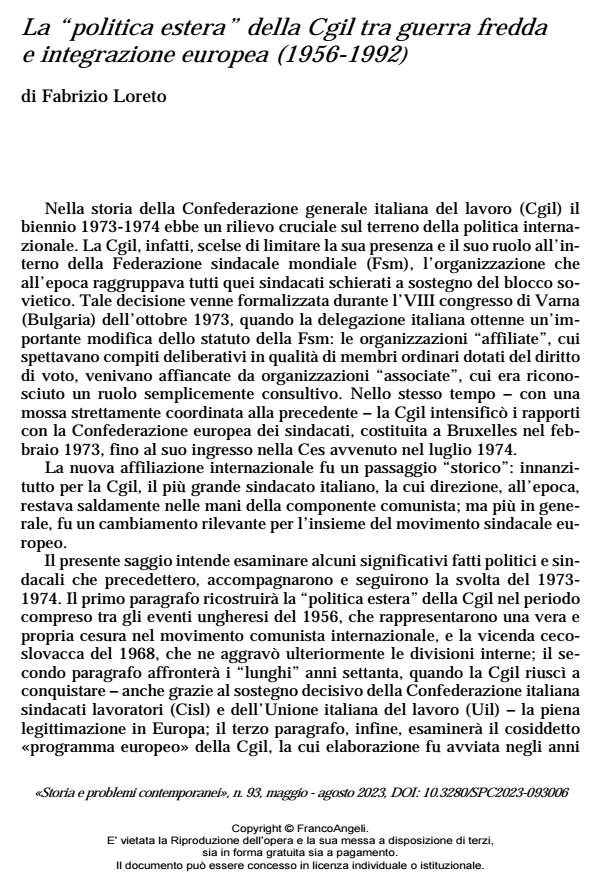La “politica estera” della Cgil tra guerra fredda e integrazione europea (1956-1992)
Titolo Rivista STORIA E PROBLEMI CONTEMPORANEI
Autori/Curatori Fabrizio Loreto
Anno di pubblicazione 2024 Fascicolo 2023/93
Lingua Italiano Numero pagine 16 P. 67-82 Dimensione file 200 KB
DOI 10.3280/SPC2024-093006
Il DOI è il codice a barre della proprietà intellettuale: per saperne di più
clicca qui
Qui sotto puoi vedere in anteprima la prima pagina di questo articolo.
Se questo articolo ti interessa, lo puoi acquistare (e scaricare in formato pdf) seguendo le facili indicazioni per acquistare il download credit. Acquista Download Credits per scaricare questo Articolo in formato PDF

FrancoAngeli è membro della Publishers International Linking Association, Inc (PILA)associazione indipendente e non profit per facilitare (attraverso i servizi tecnologici implementati da CrossRef.org) l’accesso degli studiosi ai contenuti digitali nelle pubblicazioni professionali e scientifiche
The essay reconstructs the evolution of the Cgil’s international policy from the first break with the Ussr in 1956, after the events in Hungary, to the start of the European Union in 1992, after the end of the Cold War. The essay analyses the path of autonomy taken in the 1960s in relation to the World Trade Union Federation; then, the process that led in the 1970s to joining the European Trade Union Confederation, also thanks to the relationship with Cisl and Uil; finally, the Cgil’s European programme, the elaboration of which was started before the fall of the Berlin Wall to reach maturity on the eve of the Maastricht Treaty.
Parole chiave:Trade Union, Labour, European Integration, Cold War, Trade Union Autonomy, Trade Union Unity
Fabrizio Loreto, La “politica estera” della Cgil tra guerra fredda e integrazione europea (1956-1992) in "STORIA E PROBLEMI CONTEMPORANEI" 93/2023, pp 67-82, DOI: 10.3280/SPC2024-093006